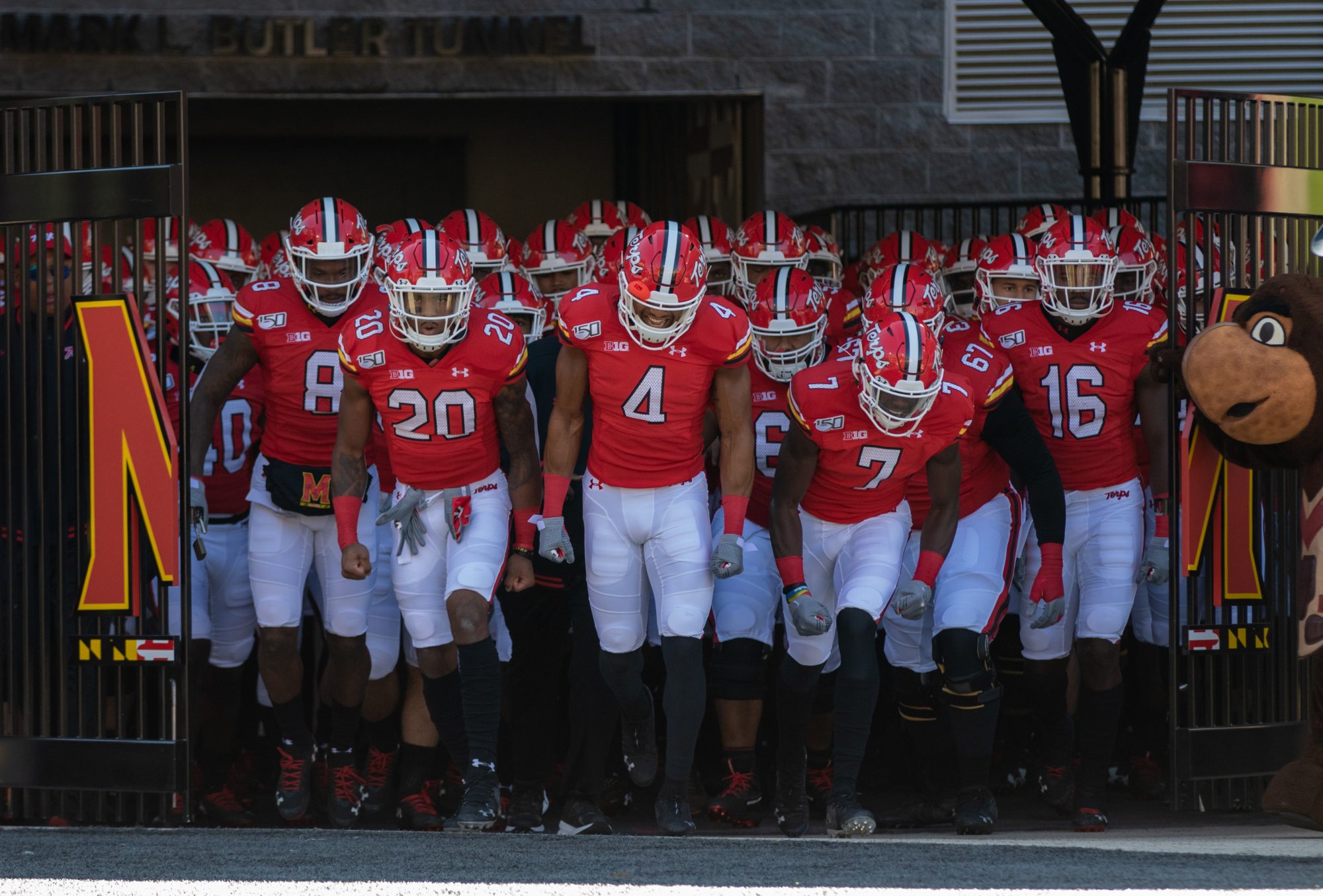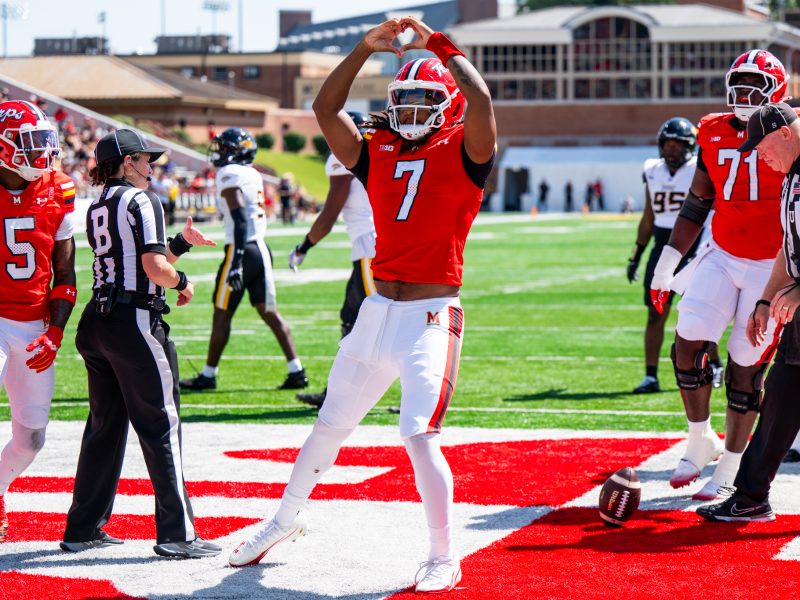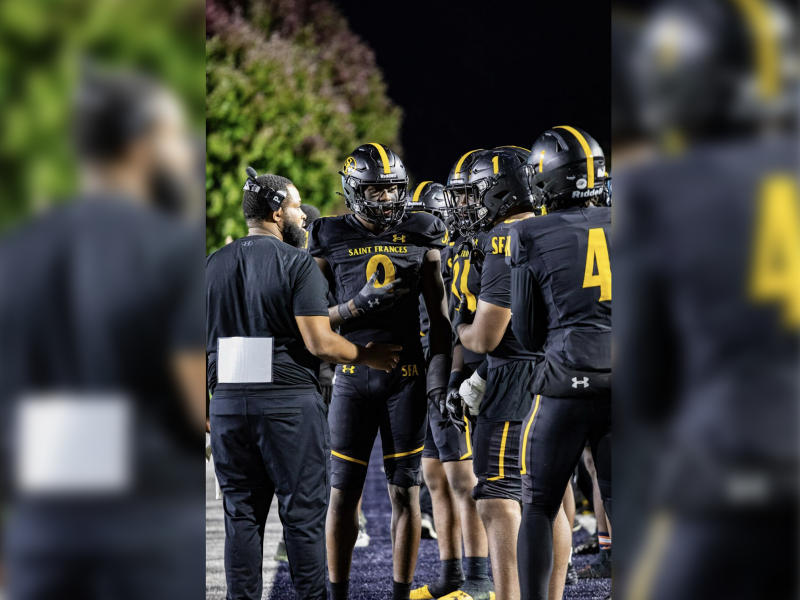COLUMBUS — The task ahead of Maryland football had been imposing enough in front of 101,022 fans there to see Ohio State, the top-ranked team in College Football Playoff seeding. But that task quickly turned to an impossibility when the Buckeyes scored again and again and again and again and again and again — six straight possessions, six straight touchdowns.
The onslaught, which only ended when Ohio State knelt down before halftime, was possible because of ineffectual offense and back-footed defense. It was the early makings of the Terps’ 73-14 capitulation Saturday. It was another embarrassing display in coach Mike Locksley’s first year as full-time head coach, one that included DeMatha offensive lineman Jordan White — a three-star prospect — decommitting mid-blowout.
But Maryland’s fifth straight loss also coincides with a worrisome trend. In the past five games, the Terps’ opponent has scored on at least its first two attempts. Saturday’s output was the most severe, but it’s hardly new.
As Maryland plays from behind early and often, there’s little room for error on defense, and more pressure mounts on an offense still searching for the success it created during the first two weeks. Against Ohio State, the Terps’ chances were always slim. Fifty-two unanswered points only confirmed the prognosis.
“We always believe that the team that throws the first punch is the team most likely to win the game,” running back Tayon Fleet-Davis said. “And O State did that.”
[Read more: Maryland football continues downward spiral as No. 3 Ohio State wreaks havoc in 73-14 rout]
It started against Purdue on Oct. 12, when backup quarterback Jack Plummer drove the Boilermakers to a two-score lead after just eight minutes of play, and it has continued ever since. Indiana scored on its first two possessions, and Minnesota on its first three. Last week, Michigan returned the opening kickoff to the house and followed it up with another touchdown.
Barring a 34-28 defeat to the Hoosiers, Maryland wasn’t particularly close in any of them.
On Saturday, the Terps’ offense didn’t manage a first down until an Ohio State facemask penalty gifted one. It took until the second quarter to string together two straight plays that yielded positive yardage. That gave quarterback Justin Fields ample time to operate the Buckeyes’ offense, converting all eight third-down attempts in the first half and compiling 705 yards by the time the final whistle blew.
“I mean, on defense we couldn’t get off the field, didn’t generate any pass rush. On offense, we couldn’t sustain drives. You know, 2-of-11 on third downs,” Locksley said. “To try to keep their offense off the field, we needed to play better on offense, which we didn’t do a great job of in the first half.”
[Read more: Against his former team, Keandre Jones’ focus is on leading for Maryland football]
Back when the Terps were on top of the world, beating then-No. 21 Syracuse 63-20 in early September to become 2-0, it appeared as if Locksley’s playbook — and offensive coordinator Scottie Montgomery’s play-calling — would combine to create a near-unstoppable attack filled with big plays and quick starts. Maryland scored on its first three possessions against the Orange, needing an average of about two and a half minutes to find the end zone.
The inconsistencies first exposed themselves in a loss to Temple — unsteady quarterback play, a boom-or-bust offense and a shaky defense — and have grown to define the Terps during the losing streak.
Saturday’s display was particularly troubling. And as any national-title contender would, Ohio State capitalized.
“When a team comes out and gets momentum very early in the game, it’s very hard to take it back,” Fleet-Davis said. “That’s why one of our goals is to come out and get to a fast start.”
To Maryland’s credit, it didn’t roll over. Locksley’s squad went out and scored twice, even as the Buckeyes continued to pile on.
It was the start, however, that quickly turned Saturday’s contest into a laugher. And while the Terps had a slim chance as it was before kickoff against one of the best teams in the country, it’s the habit of continually allowing early scores that plunges this team into a mire.
“I did feel we competed a little better in the second half, but you can’t get behind a good team like Ohio State early like we did,” Locksley said. “We’ve got to do a better job.”



